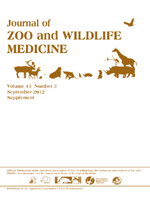Phenolic compounds are bioactive chemicals found in all vascular plants but are difficult to characterize and quantify, and comparative analyses on these compounds are challenging due to chemical structure complexity and inconsistent laboratory methodologies employed historically. These chemicals can elicit beneficial or toxic effects in consumers, depending on the compound, dose and the species of the consumer. In particular, plant phenolic compounds such as tannins can reduce the utilization of iron in mammalian and avian consumers. Multiple zoo-managed wild animal species are sensitive to iron overload, and these species tend to be offered diets higher in iron than most of the plant browse consumed by these animals in the wild and in captivity. Furthermore, these animals likely consume diets higher in polyphenols in the wild as compared with in managed settings. Thus, in addition to reducing dietary iron concentrations in captivity, supplementing diets with phenolic compounds capable of safely chelating iron in the intestinal lumen may reduce the incidence of iron overload in these animal species. It is recommended to investigate various sources and types of phenolic compounds for use in diets intended for iron-sensitive species. Candidate compounds should be screened both in vitro and in vivo using model species to reduce the risk of toxicity in target species. In particular, it would be important to assess potential compounds in terms of 1) biological activity including iron-binding capacity, 2) accessibility, 3) palatability, and 4) physiological effects on the consumer, including changes in nutritional and antioxidant statuses.
How to translate text using browser tools
2 September 2012
PLANT PHENOLICS AND THEIR POTENTIAL ROLE IN MITIGATING IRON OVERLOAD DISORDER IN WILD ANIMALS
Shana R. Lavin
ACCESS THE FULL ARTICLE
hemochromatosis
hemosiderosis
iron overload disorder (IOD)
iron storage disease
phenolics
plant secondary compounds
tannins





